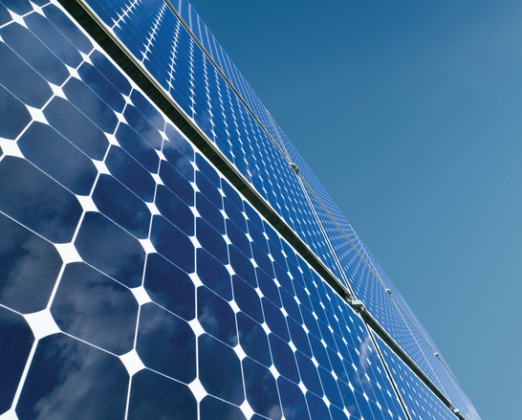UPDATE: The PEC Board of Directors today (Friday, Dec. 17) formally approved the proposed new solar interconnection rate (Sustainable Power Credit). The new credit was adopted after more than a year-long public process of cost review, member input, and independent studies, officials said.
Pedernales Electric Cooperative Board of Directors will consider reducing the amount of money paid back to solar power participants at today's meeting as a way to provide more equity in contribution of bill throughout the membership, officials said.
The charge for electricity received through the Community Solar Program is $0.061080/kWh. The proposed new buy-back rate would be $0.0537/kWh. If approved, those in the solar program may experience a hike in their rate due to fewer buyback dollars from PEC.
However, the aim of the proposal by the cooperative, comprised of 345,000 members in 24 counties, is to get solar customers to pay a more “fair and equitable” share of the cost of power sources across the board, officials said.
Participants in the PEC Community Solar Program receive a credit on their bill for the excess power generated through solar which is considered a “buyback” by PEC.
Opponents of decreasing the buyback rate, who expressed concerns during a November PEC meeting, believe decreasing the solar buyback rate stifles incentive and penalizes solar customers for choosing an alternative energy source.
Members can subscribe by either installing their own systems or without installation tapping into a portion of the output by PEC solar generation sites. The solar units will receive a credit adjustment of -$0.010848 to account for savings on PEC’s Transmission (TCOS) costs.
“With so much growth in our region, both solar and non-solar growth, equitable rates for all members is a priority. Addressing this now will help keep rates fair for everyone,” said JP Urban, PEC spokesman and vice president of external affairs. “It (the proposed rate for the solar program) creates a simple, sustainable, and fair rate for all our customers and furthers our mission to provide safe, reliable, and low-cost power.”
Staff made the recommendation based on a third-party solar study, coordinated by GDS Associates, Inc, which assessed and existing board‐approved rate design – Interconnect Wholesale Energy Rate – slated to become effective Jan. 1, 2022.
The study released by PEC during the summer sought to identify the cost benefits of member-owned distributed generation.
The study adhered to a “cost-based approach” and determined that non-solar members were paying over $1 million more per year, characterized as a “subsidy”, compared to members of the solar program.
PEC District 5 Director James Oakley, who represents Burnet County, expressed his support for the rate adjustments recommended by staff, referring to it as “fair and equitable to all members.”
“With the proposed new interconnection solar rates, PEC will continue to offer more money to their solar members for surplus electricity than most Texas cooperatives and utilities,” he told The Highlander. The proposed buy-back rate is estimated about 30 percent more than the average wholesale contract purchase price.
“The proposed buy-back rate for members with roof top solar production is a rate that no longer is subsidized by the non-solar members,” Oakley said.
The “aggregate subsidy” for this year is estimated at approximately $1.4 million, which is expected to increase with more interconnections.
In comparison, CPS Energy in San Antonio pays $0.02/kWh during the summer, and even less the rest of the year, he explained.
CoServ, the second largest co-op in Texas after PEC, pays nothing for surplus energy from rooftop solar.
PEC board members, staff will consider incorporating revised distributed generation rates into PEC’s 2022 Rate Plan proposal.
The regular meeting is scheduled to start at 9 a.m. today, Dec. 17 at PEC Headquarters, 201 S. Avenue F in Johnson City.
PEC has more than 300,000 members. Approximately 6,000 of them participate in the Community Solar Program.


